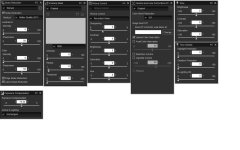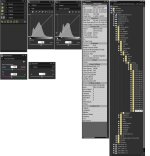Sorry, replying to 2 answers from 2 different people at the same time
What does Capture NX-D beta do automatically to each RAW that's loaded into it?
After having a little go with it, it seems to do lens distortion correction (if turned on in camera), and noise reduction too (if turned on in camera). It doesn't seem to do vignetting (that has to turned on in software).
What about things like sharpening etc? Is that included in the picture control adjustment?
Etc
As you will be processing RAW images in computer it is best to switch off all the correction functions. The Noise and lense corrections functions take up CPU time, hence slow down shooting a lot. So do all the scene modes.
What Capture NX-D beta does automatically depends on what you have switched on as default. Some functions are
- Lense geometric corrections
- Vignetting correction. Either from the lense profiles or if that is not available you can do it manually.
- Scene modes.
- Exposure control.
- White balance and Colour correction.
- Noise reduction at 3 levels - fast, medium and with full control of radius, edge and colour.
- Custom level controls, with both predefined modes as well as custom curves. Custom curves and levels can be saved and applied in batch mode.
The number of controls is quite a lot, and I have yet to try them all out. I normally use exposure controls, preset shadow recovery and at times geometric correction. I have tried sharpening, but prefer what comes out of camera. My aim is to get low noise from the camera itself, hence I rarely use noise control.
For converting RAW into jpeg/tiff you can either do it individually or select all the files and do it at one go.


